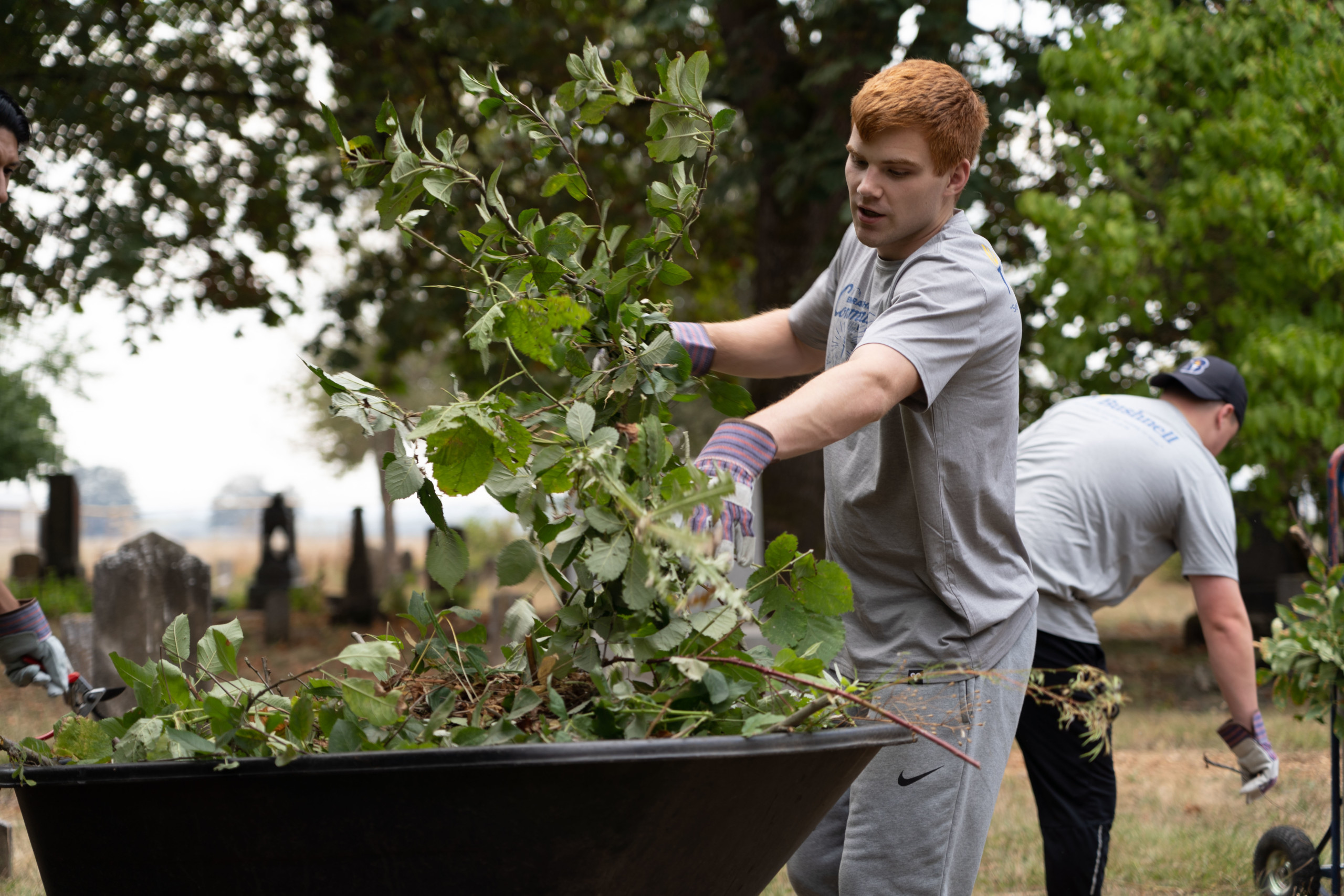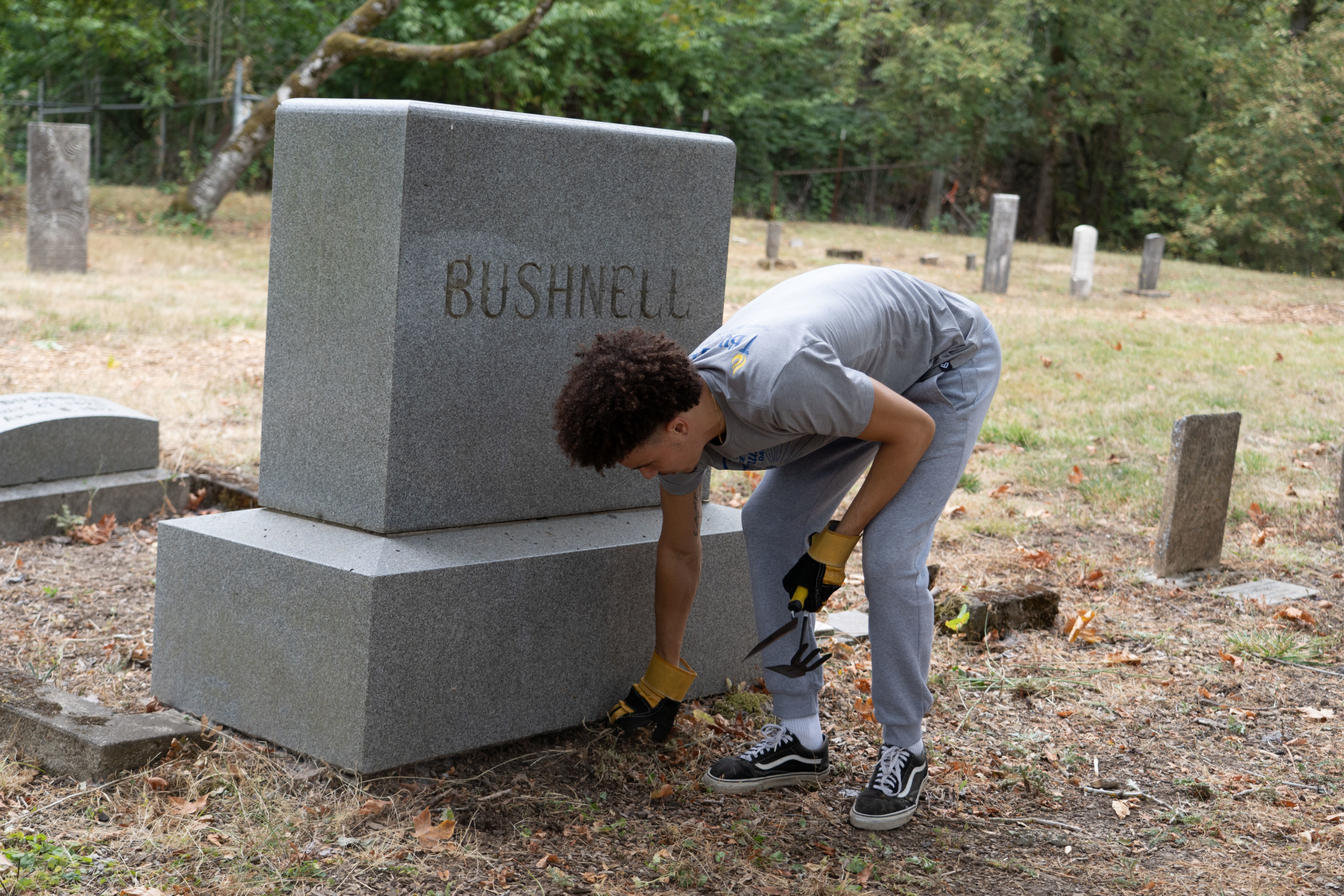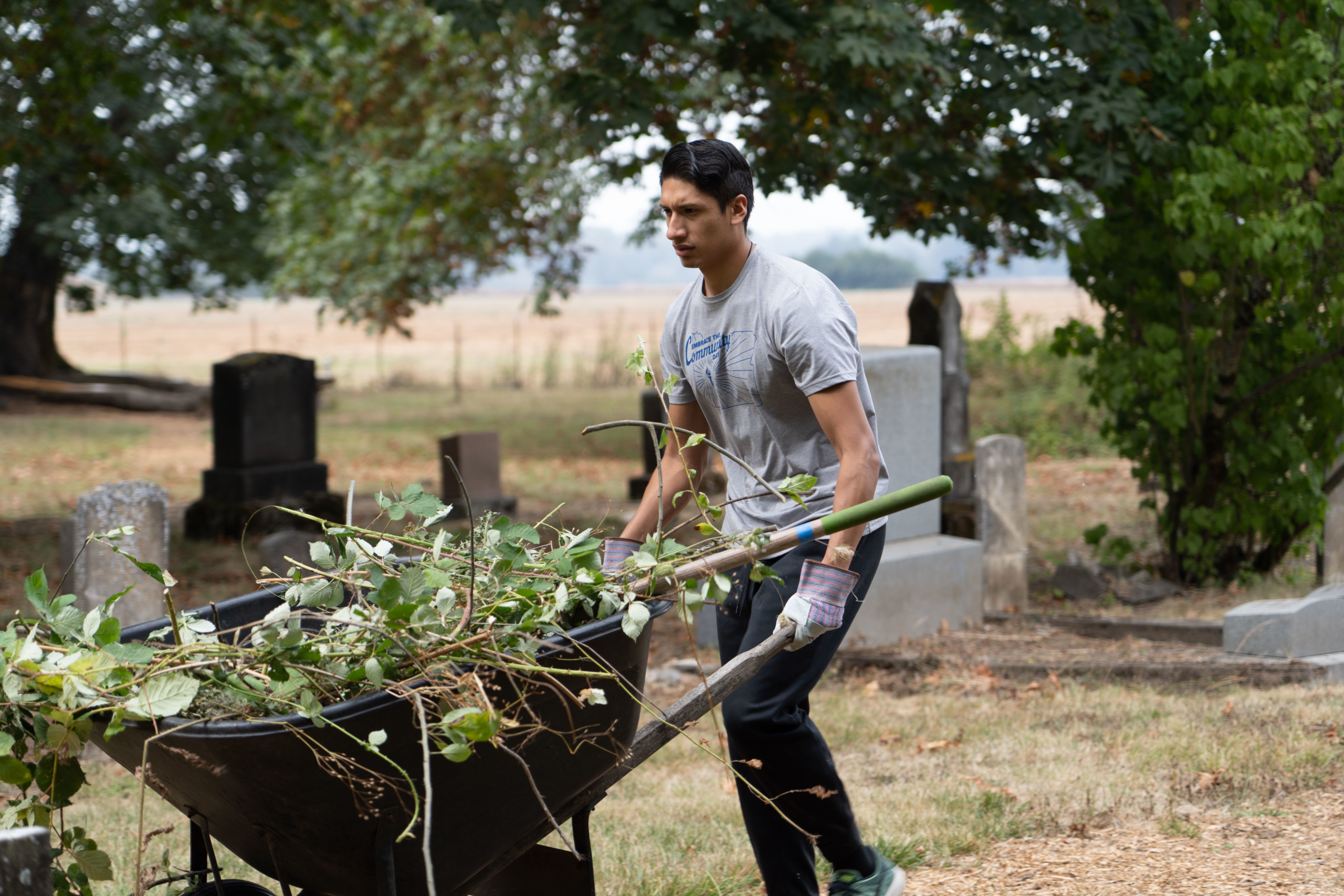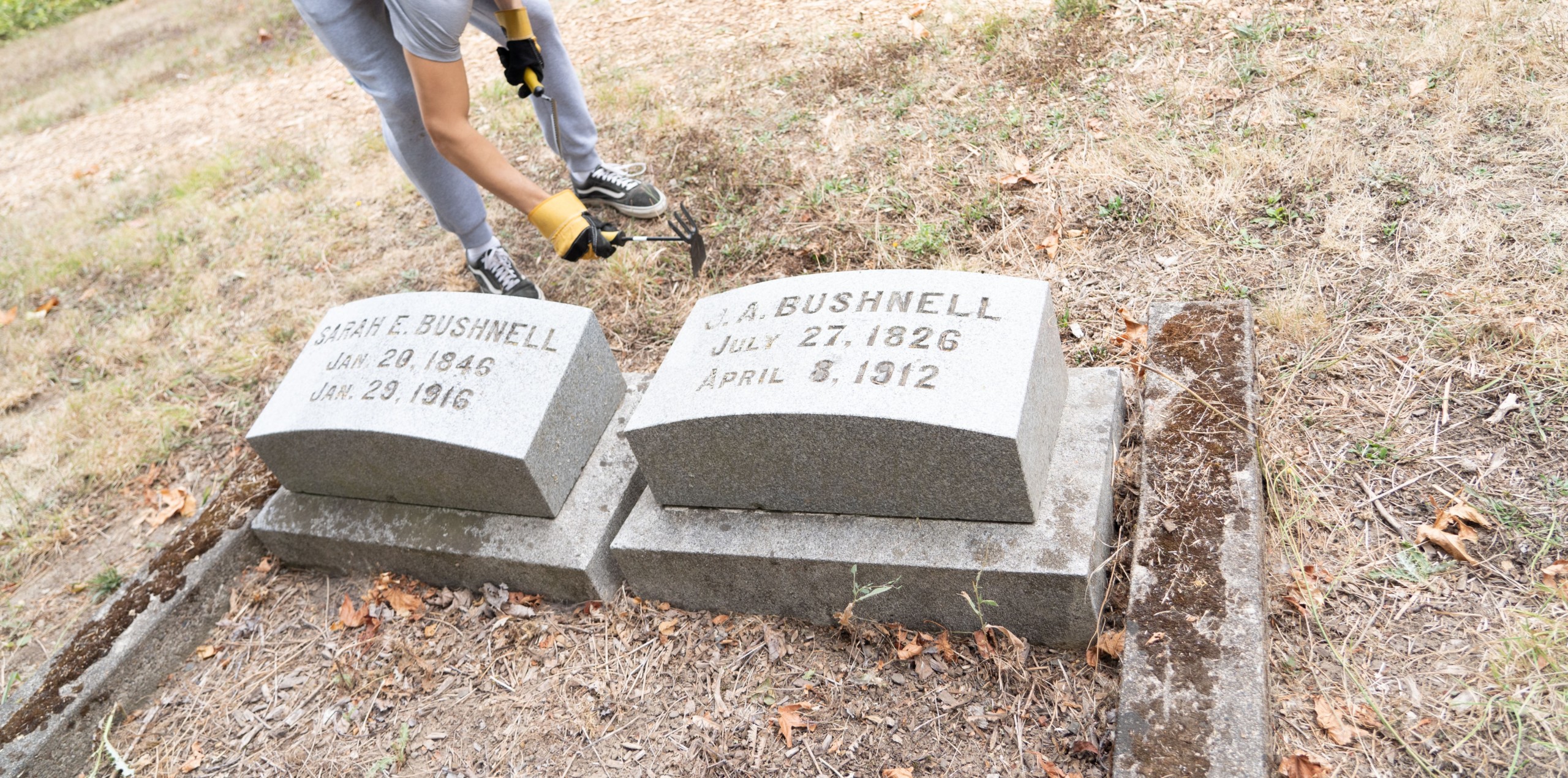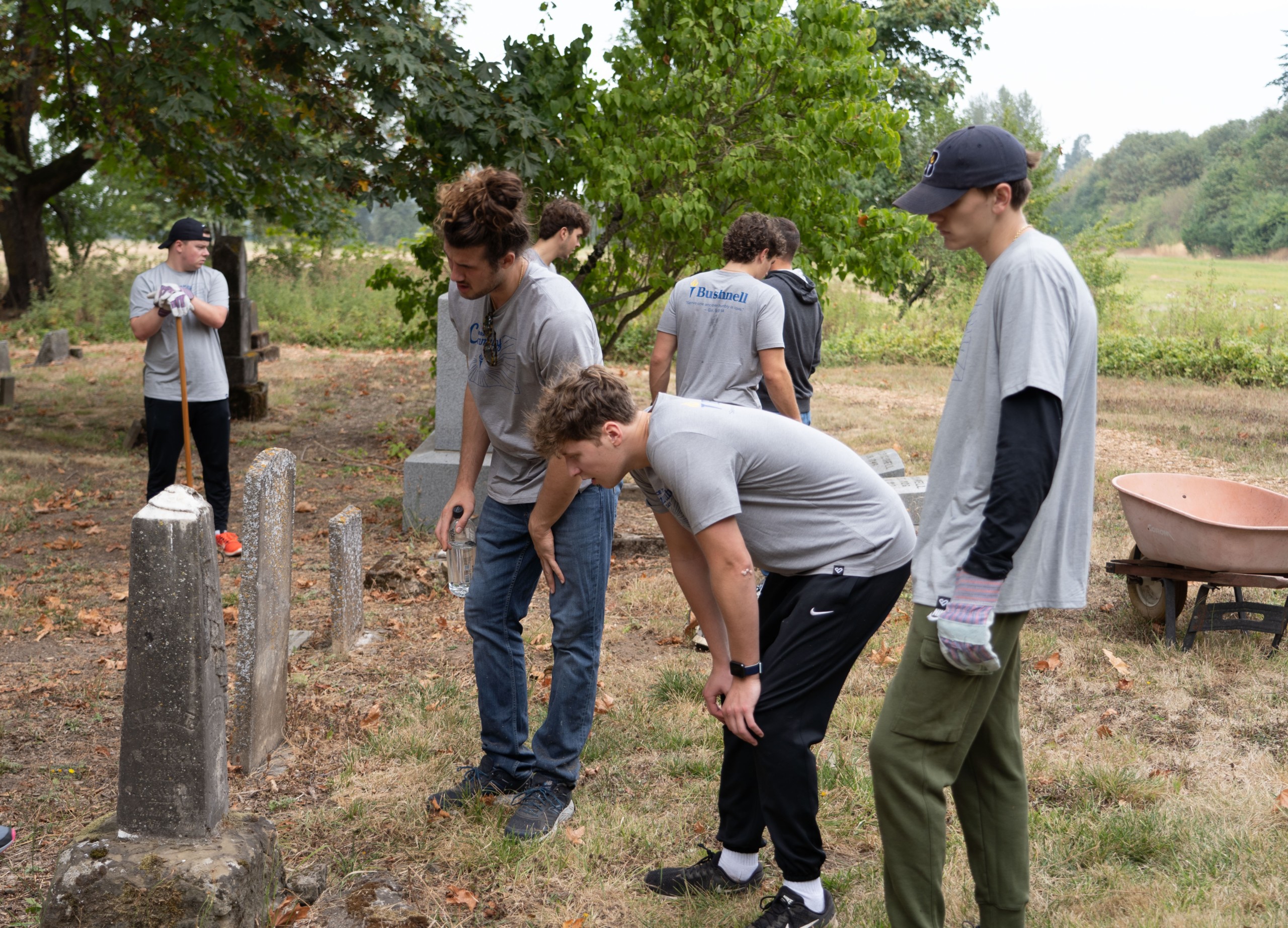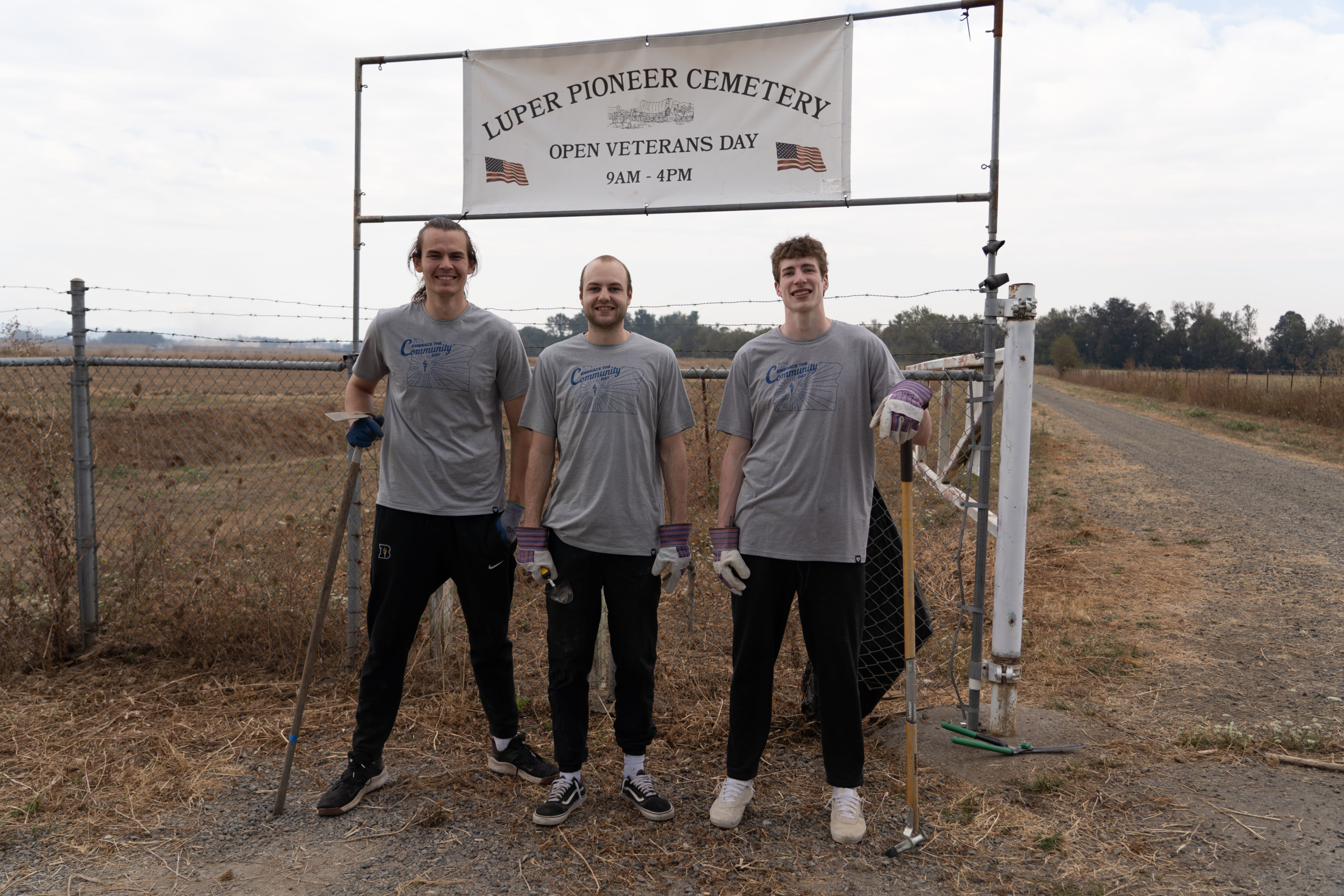
It’s a peculiar scene. College basketball players, pulsing with spring-loaded energy and life, make their way out to the reverent confines of Luper Pioneer Cemetery each fall. These young, curious Beacons have not come out to do mischief, but to take special care of this hallowed ground and the graves within. The men’s basketball team, coaches and students side-by-side, spends hours building camaraderie in this historic place during Embrace the Community (ETC) Day. Without fanfare or attention, they make a difference in a place where many will see and appreciate the fruits of their labors without knowing who the laborers have been.
This is true for many of the University’s ETC Day projects. The campus shuts down and students from every class and affinity group launch out into dozens of helping enterprises. From churches and non-profit entities to public parks and private homes, Beacons have gone out into the community and stacked thousands of hours of generous service into Eugene, Springfield, and surrounding communities over the years.
There’s also nothing unusual about witnessing Bushnell students pouring their efforts into community service. Bushnell alumni often recount their times spent in service alongside the stories of educational experience. The tradition of service continues.
But for the descendants of the brave pioneers buried at Luper Pioneer Cemetery, the care for this historic place by Bushnell student athletes brings a sense of legacy and pride. There seems to be little coincidence that the old road leading to the Luper Pioneer Cemetery is named Beacon Drive. The story is one that beckons the University into its past.
The Willamette Valley was still in its infancy when the first pioneer families found their final resting place in the plains of the unincorporated area of Irving on the Grand Prairie, or what is now known as Junction City. Nearly fifty families made their way to this fertile valley in the mid-1850’s, arriving exhausted, hungry, and often empty-handed after their months-long journey from cities across the Midwest and East Coast in covered wagons. Some traveled north from California over the Applegate Trail, others from the Oregon Trail along the Dalles. Still others barely made the final stretch of the journey when they took the fated “cut off ” trail over Willamette Pass, spending a desperate winter in Oakridge and ultimately being rescued by explorers heading up the trail from Eugene. The travelers who were rescued in what is now coined the “lost wagon train of 1953” effectively doubled the population of settlers in the southern Willamette Valley. Many of these families were interred in Luper Pioneer Cemetery, and the site remains to tell their stories and remind us of their determination, faith, and trials.
Among those who staked their land claims, built homes with hand-hewn timber, established businesses, founded churches, and formed these new settlements were the families of James Addison Bushnell and his wife Elizabeth Adkins Bushnell. Their gravesites and those of their many family members whisper the memories of animated lives, tragic losses, and an unwavering dedication to building a community of hope and prosperity. Meanwhile, the remarkable fact that Bushnell family gravesites are on Beacon Drive provides a sense of divine intervention and even ordination to the efforts.
The unlikely connection between the University and the historical site began with the name change from NCU to Bushnell in 2020. President Womack and his assistant Jennifer Box conducted a deep dive into the legacy and history of James Bushnell, resulting in the unfolding discovery of his extraordinary impact in the development of schools, libraries, churches, businesses, Oregon Christian Convention at Turner, and even the establishment of the State of Oregon. Bushnell’s home still stands in Junction City, as do several organizations and institutions that began under his leadership and generosity – including Bushnell University. Mr. Bushnell served as President of the Board of Regents from the University’s founding in 1895 to his death in 1912.
To learn more about Luper Pioneer Cemetery visit lupercemetery.com.
